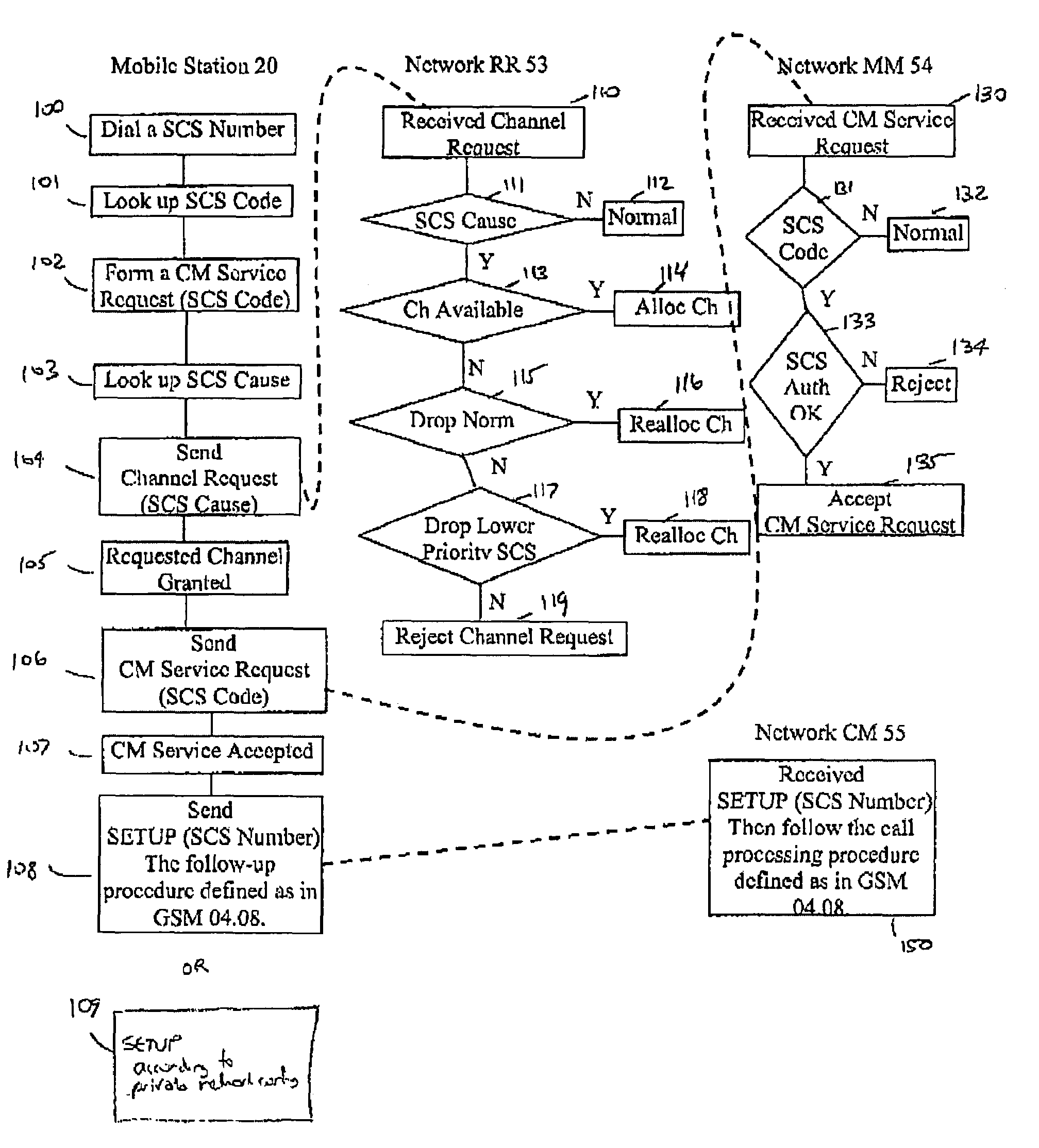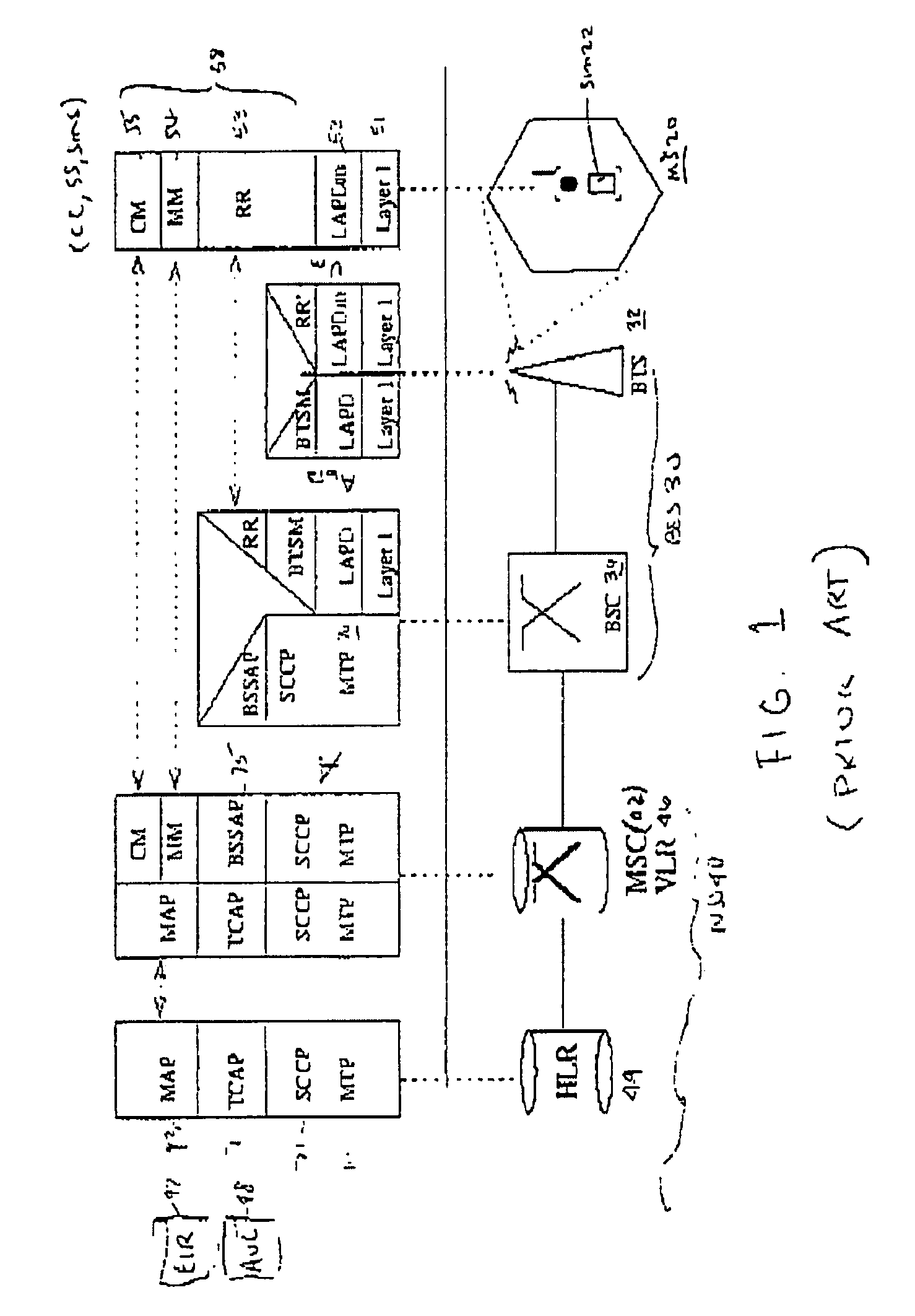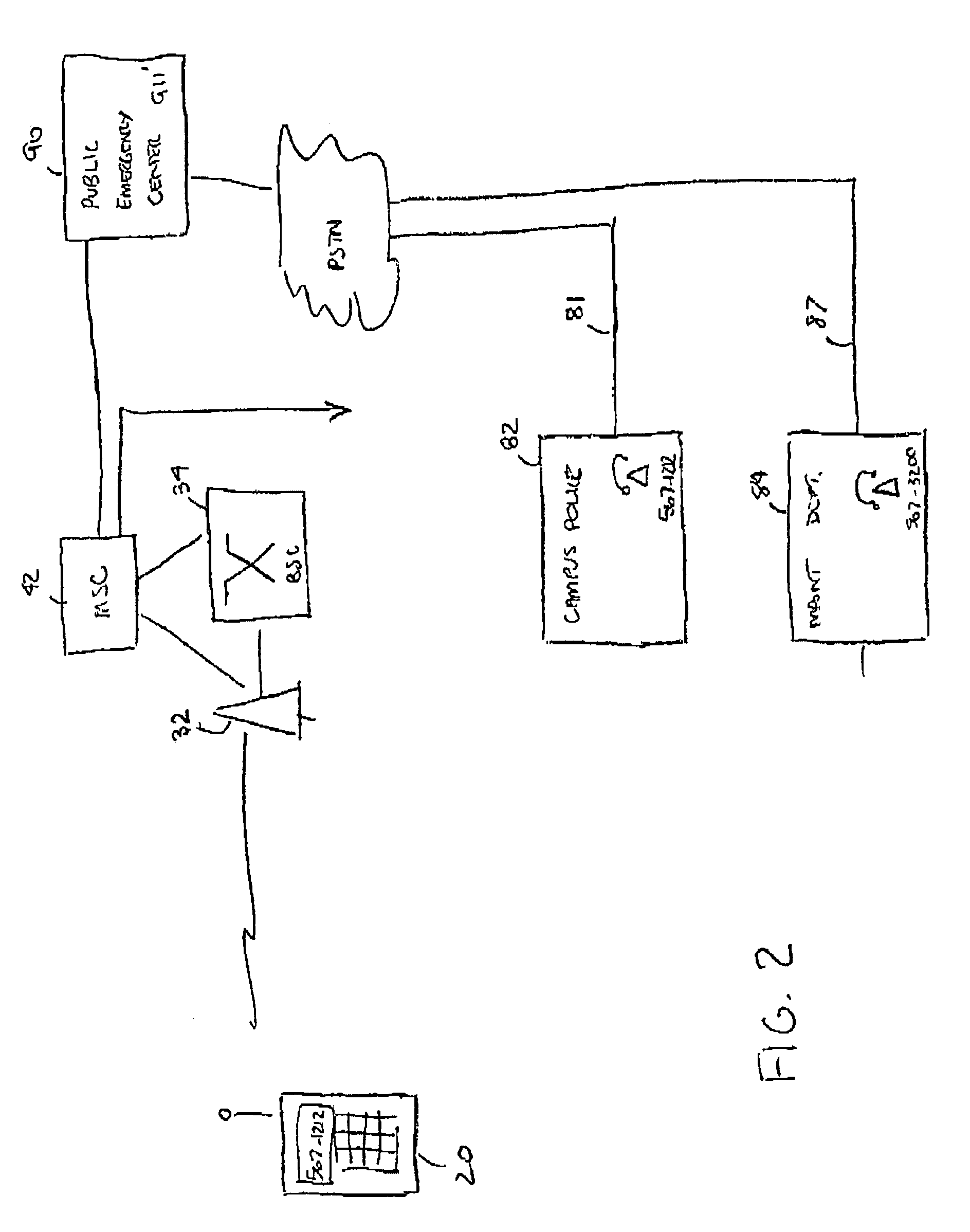Private emergency or service-specific call approach in GSM systems
- Summary
- Abstract
- Description
- Claims
- Application Information
AI Technical Summary
Benefits of technology
Problems solved by technology
Method used
Image
Examples
Embodiment Construction
[0028]Turning attention to FIG. 1, the functional architecture of a GSM system 10 can be broadly divided into subsystems including a mobile station (MS) 20, a Base Station Subsystem (BSS) 30, and a Network Sub-System (NSS) 40. Each subsystem is comprised of functional entities which communicate through various interfaces using protocols specified by the GSM standard.
[0029]The mobile station 20 in GSM is really two distinct entities. The actual hardware is the mobile equipment, which is the equipment which the subscriber or user carries. Subscriber information, which includes a unique identifier called the International Mobile Subscriber Identity (IMSI), is stored in a Subscriber Identity Module (SIM) 22, typically implemented as a smart card. By inserting the SIM card in any GSM mobile equipment, a user is able to make and receive calls at that terminal and receive other services to which the user has subscribed. By decoupling subscriber information from a specific terminal, greater...
PUM
 Login to View More
Login to View More Abstract
Description
Claims
Application Information
 Login to View More
Login to View More - Generate Ideas
- Intellectual Property
- Life Sciences
- Materials
- Tech Scout
- Unparalleled Data Quality
- Higher Quality Content
- 60% Fewer Hallucinations
Browse by: Latest US Patents, China's latest patents, Technical Efficacy Thesaurus, Application Domain, Technology Topic, Popular Technical Reports.
© 2025 PatSnap. All rights reserved.Legal|Privacy policy|Modern Slavery Act Transparency Statement|Sitemap|About US| Contact US: help@patsnap.com



